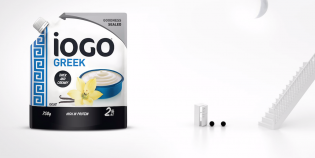Marketing and advertising professionals are gathered in Collingwood, Ont. for Future Flash 2011, the fifth annual thought leadership conference organized by the Institute of Communication Agencies (ICA).
In her opening remarks yesterday afternoon, ICA president Gillian Graham told attendees that while change is happening in the marketing industry at a rapid pace, it has always been this way.
Graham held up the logbook of the Canadian Association of Advertising Agencies from 1923, which chronicled the state of the industry. At that time, members of the industry were stressed because direct mail was eroding newspaper ad sales, and ad agencies were starting to poach talent, which was considered “ungentlemanly” behaviour.
Graham was quick to remind attendees that “other generations have gotten through [change], as will we.”
Ty Montague from Co: Collective was the first speaker of the day and outlined the importance of storytelling when building a brand, and how underplayed that power is.
“In talking with CEOs, stories are thought of as childlike and for entertainment purposes [and] have nothing to do with ROI,” he said. In the face of overwhelming product choice, he said, consumers buy stories.
Montague used the example of New York Times journalist Rob Walker, who hypothesized that value comes from the story behind a product, and not the product itself. To test his theory, Walker purchased worthless items such as a broken ceramic horse head and a small jar of mayo, the later of which cost only a penny. He paired the objects with contemporary fiction writers and asked them to compose a story for their item.
Walker then put the objects up for sale on eBay. The jar of mayo sold for $51.
“This is not an anomaly,” said Montague, adding that Walker has done it five different times with the storied objects increasing an average of 3,800% in value on the eBay.
Some of the best storytelling is done through action, not words, said Montague, who used the Subway chain of restaurants as an example. The brand was built on the pillar of “freshness,” which he said the chain has lost focus on in recent years with the introduction of its $5 foot-long promotion and pitchman Jared.
In Tokyo, however, Subway has started growing its own lettuce in each of its restaurants using hydroponics. Consumers can watch as restaurant workers pick the lettuce that goes into their sandwich, so not only do they leave with lunch but also a great story to tell their friends, said Montague.
Standing out in the marketplace today is difficult, given the sheer volume of brands available, and when consumer have a hard time deciding, they rely on word of mouth, said Montague. So the story people tell their friends is equally as important.
During another breakout session yesterday afternoon, Noah Brier from newly formed tech company Percolate gave his perspective on how to evaluate online content, which he said could be categorized as either “stock” or “flow.”
Stock content, he said, is still valuable after two months or even two years. “You don’t often meet a three month old Tweet because its value disappears,” said Brier. Flow is what people are talking about right now, and what most marketers are probably worried about, he said, adding that the question he hears most from CMO’s is “What should I tweet about?
“It’s mind boggling these folks can put cereal in millions of stores around the world but struggle with what to tweet about,” he said.
In social media, curators are usually given credit by consumers for the content they share, rather than the brands that create it. “Brands are freaked out about this… Brands are worried people will forget about them if they don’t stick a logo on [content].”
Future Flash continues today with speakers including:
• Paul Kemp-Robertson, Contagious
• David Lee, TBWA\Worldwide
• Gareth Kay, Goodby, Silverstein & Partners
• Nick Broomfield, The Customer Framework










